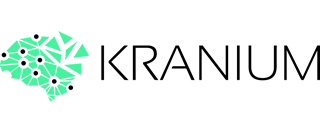Engineering backlogs, integration overhead, and risk reviews turn simple AI workflows into multi-month projects.
A new pattern is emerging: AI builders inside product, data, and operations teams are using a
no-code AI platform to build AI applications without waiting on traditional delivery cycles.
Platform teams keep control; builders get speed.
Why Classic Enterprise AI Development Hit Its Limit
The classic model for enterprise AI development looks like this:
- Business team drafts a concept or slide for a new AI use case.
- Engineering estimates multiple sprints to wire data, models, and APIs.
- Data team provisions access and transformations one project at a time.
- Risk and compliance review happens at the end of the process.
The result: prototypes arrive late, are hard to change, and rarely become a
reusable pattern across teams.
A dedicated AI app builder changes this structure.
Platform teams own infrastructure, policies, and integrations.
Builders focus on assembling workflows and defining behaviour.
Who Kranium Is Designed For: AI Builders
In most organisations, the people who understand the work are not the ones maintaining the codebase.
Kranium is built for those teams:
- Product managers who own flows and outcomes.
- Operations architects who design processes end-to-end.
- Data product managers responsible for metrics and signal quality.
- Platform leads who must keep environments stable and governed.
These AI builders do not need another presentation about “AI potential”.
They need a no-code AI platform that lets them ship workflows safely,
without rebuilding infrastructure for every experiment.
What a No-Code AI Platform Actually Does
Kranium is not a form builder. It is an execution layer for AI-driven workflows.
A serious no-code AI platform should provide:
- Model orchestration: connect LLMs and ML models as reusable components.
- Workflow graph: triggers, AI steps, rules, actions, and human review blocks.
- Environment separation: dev, staging, and production with controlled promotion.
- Observability: logs, metrics, and traces for every run.
- Governance layer: permissions, approvals, policy enforcement.
- Integration fabric: structured way to manage data integration in no-code AI.
From the builder’s perspective, these capabilities show up as blocks they can connect.
From the platform team’s perspective, they remain governed, auditable assets.
Prototype AI Workflows in Days, Not Quarters
With Kranium, AI builders can prototype AI workflows in days using a visual builder aligned to how they already think about processes.
Typical build sequence:
- Define the trigger – e.g. “contract uploaded”, “case created”, “record updated”.
- Add AI steps – classify, extract fields, summarise, generate recommendations.
- Encode rules – thresholds, routing conditions, regulatory constraints.
- Insert human review blocks where needed for high-risk actions.
- Connect systems – CRM, ticketing, data warehouse, or internal tools.
- Test on sample data and roll out to a controlled group.
This is how teams build AI apps without coding (enterprise) style:
the logic is visual, the execution is managed, and every run is traceable.
No-Code AI for Internal Tools
A large share of value comes from no-code AI for internal tools—places where employees handle repetitive, decision-heavy work:
- Reviewing and routing incoming cases or records.
- Extracting structured data from unstructured documents.
- Summarising long activity histories for faster decisions.
- Flagging risk indicators or missing information.
Instead of custom projects, each of these patterns becomes a Kranium workflow.
Teams reuse established components and policies instead of rebuilding from zero.
Data Integration and Governance by Design
At scale, the challenge is not drawing boxes on a canvas.
It is controlling what data flows where, which models are allowed, and who can change what.
Manage Data Integration in No-Code AI
A platform like Kranium gives platform teams control over:
- System connectors and credentials.
- Which tables, fields, or APIs are exposed to builders.
- How sensitive data is masked, filtered, or omitted.
- Logs for every workflow’s data access.
Builders work with curated data surfaces instead of wiring raw systems directly.
How to Govern No-Code AI
Governance is not an afterthought. Kranium embeds control points into the platform:
- Role-based permissions for who can create, edit, or publish workflows.
- Approval flows for high-impact or high-risk automations.
- Environment-specific policies for dev, stage, and production.
- Version history and rollback for workflows, prompts, and model configurations.
This is how no-code AI for regulated industries becomes practical:
the same platform that accelerates delivery also provides evidence for audits and reviews.
Choosing the Right No-Code AI Platform
A growing number of tools describe themselves as no-code AI.
For enterprise use, the evaluation criteria are specific.
When assessing the best no-code platforms for AI in 2025, platform teams typically look for:
- Clear separation between builder workspace and platform controls.
- Support for multiple model providers and internal models.
- First-class environment management (dev / stage / prod).
- Observable execution: metrics, traces, and logs.
- Policy and permission systems aligned to existing governance.
- Proven ability to deploy AI models without engineers wiring each flow by hand.
Kranium is designed around exactly these requirements: a structured way to build AI applications quickly, without giving up control.
From Backlog to Platform: Where AI Builders Change the Curve
The no-code shift is not about removing engineers. It is about changing roles:
- Platform teams define architecture, integrations, and guardrails.
- AI builders configure workflows, logic, and iterations.
- Governance teams set policies and review points.
In that model, enterprise AI development becomes repeatable.
Teams can test new ideas, standardise what works, and scale patterns across business units
without rebuilding the foundation every time.
If your organisation wants to move from isolated prototypes to a structured way of building and governing AI apps,
Kranium gives you that platform.



